Switzerland enter the FIFA Women’s World Cup with doubts. Despite their disappointing performance in last year’s UEFA Euro, with Nils Nielsen in charge, Switzerland had an excellent campaign in the World Cup Qualifiers. They sealed their ticket to Australia and New Zealand with high expectations for their second-ever FIFA World Cup appearance. That was, however, until Nils Nielsen left the job. The Danish coach has recently become Man City’s Director of Football, and in his absence, German legend Inka Grings has taken charge.
The former German international’s coaching credentials include a historic SV Straelen job, where she became the first-ever female manager in Germany’s top four tiers. However, life in Switzerland has been far from positive. Grings enters the World Cup still seeking her first win, with three draws and one loss from her first four matches.
The German manager has brought an identity to La Nati and some solid tactical foundations have been built in her first few matches. However, time is up and in a tough group with hosts New Zealand, Norway, and the Philippines, the 44-year-old will have to work hard to get results.
This tactical analysis will provide a comprehensive breakdown of Switzerland’s tactics under Inka Grings. While results have yet to come, positive performances have built a solid foundation for La Nati. Despite a turbulent start to 2023, Grings has managed to regroup the Swiss just in time for the World Cup, and this analysis will explore the ins and outs of their tactics.
Predicted Starting XI
Before diving into the tactics, the basics must be covered. First, with the formation and our predicted starting XI. Obviously, still a few weeks out from their opening match, Grings herself may not even have a defined starting lineup. On the contrary, the objective of our predicted XI is to provide an important starting point in understanding exactly how the Swiss play under Grings.
Four matches in, the German manager has yet to repeat a starting XI. Nonetheless, the formation has been the same, providing a consistent platform for her tactics. Grings has opted for a 4-4-2 with a diamond in the middle, an uncommon option in today’s football.
The traditional 4-4-2 below simplifies it. The four at the back and two up top are easy to understand, but let’s dive into the midfield. The two wide midfielders are, no pun intended, Swiss army knives.
Barcelona’s Ana-Maria Crnogorčević can play anywhere on the right side of the pitch, and Coumba Sow can play either in the midfield or on the wing. While these two are likely to start, Seraina Piubel and Riola Xhemaili also provide younger options.
The two central midfielders, Arsenal’s Lia Walti and Geraldine Reuteler, function in opposing roles. Walti is the deep-lying midfielder while Reuteler plays more advanced, almost as a traditional 10. With the two players at opposing ends of the midfield, the wide midfielders serve to form a diamond (1-2-1) or a simple 1-3 shape. The exact formation is not as important as understanding the wide midfielders are not wingers, but midfielders.
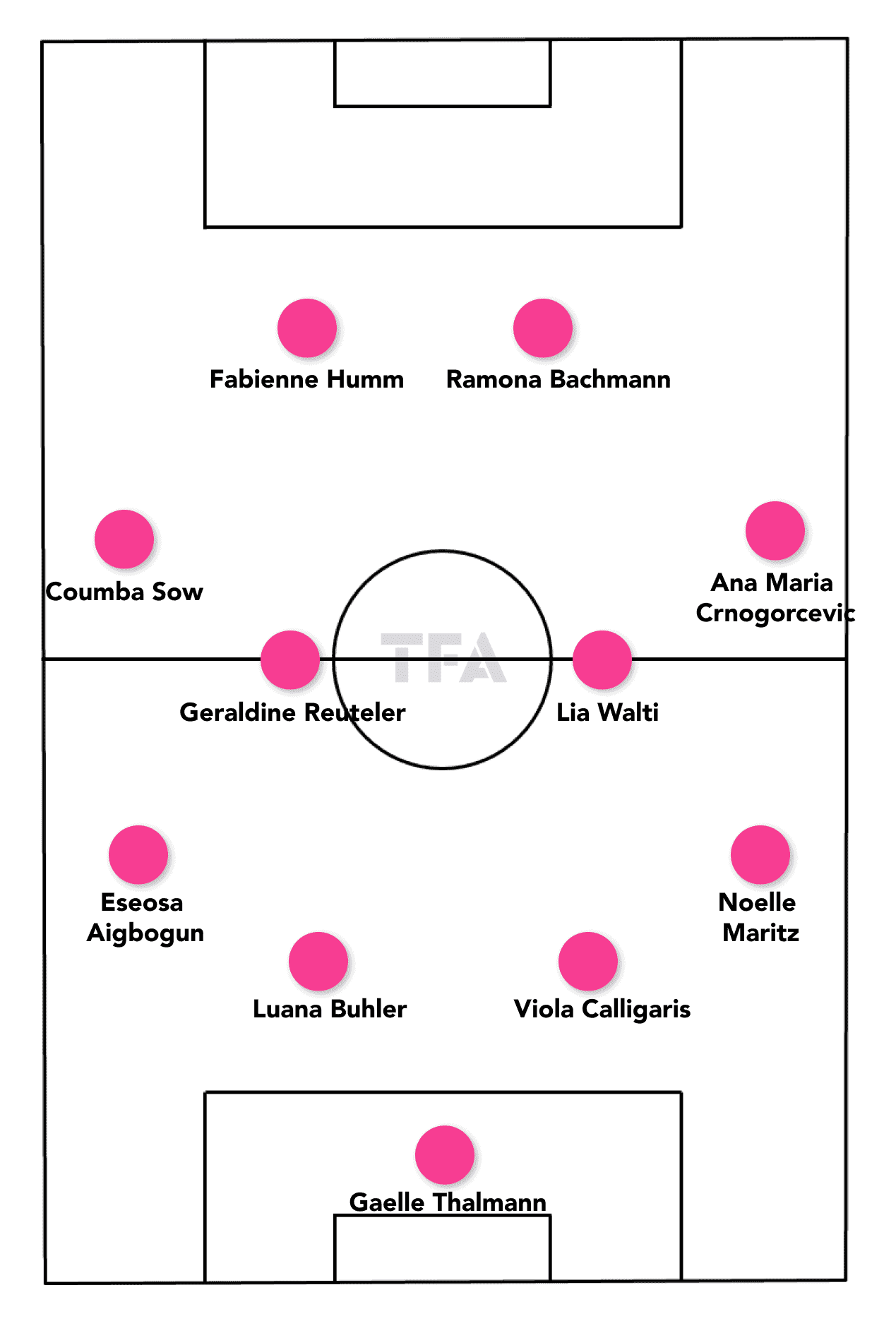
Ramona Bachmann is the star leading the frontline, probably alongside veteran Fabienne Humm. Among other options in the squad, Aston Villa’s Alisha Lehmann is likely to be an alternative to Humm. At the back, Noelle Maritz and Eseosa Aigbogun are the full-backs with Viola Calligaris and Luana Buhler as centre-backs.
This provides a general idea of who might play and where with the 4-4-2 shape as the platform. However, the Swiss are extremely versatile. Numerous players can play numerous positions. While this provides an easy introduction, players and positions could change from match to match.
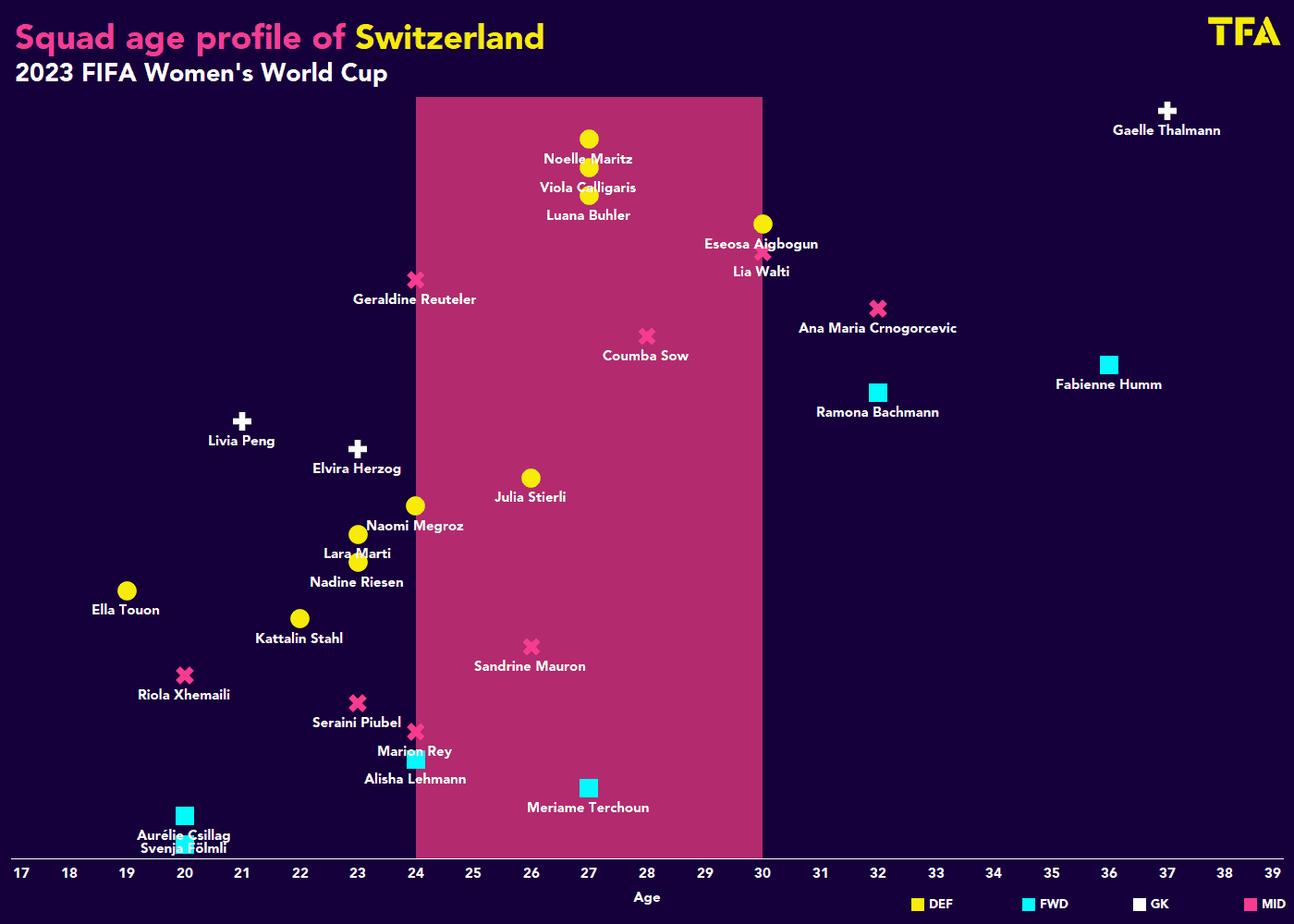
To finish this introduction, the image above outlines La Nati’s entire squad, illustrating (rough) positions and age. The veterans with experience are there, and some of them play for the biggest clubs in the world. On the other hand, plenty of young prospects with great potential are also included. For instance, 20-year-old Riola Xhemaili has recently been signed by German giants Wolfsburg. Nonetheless, the core of Grings’ squad is in the 23 to 28-year-old range — a perfect balance in the age department.
Attacking Phase
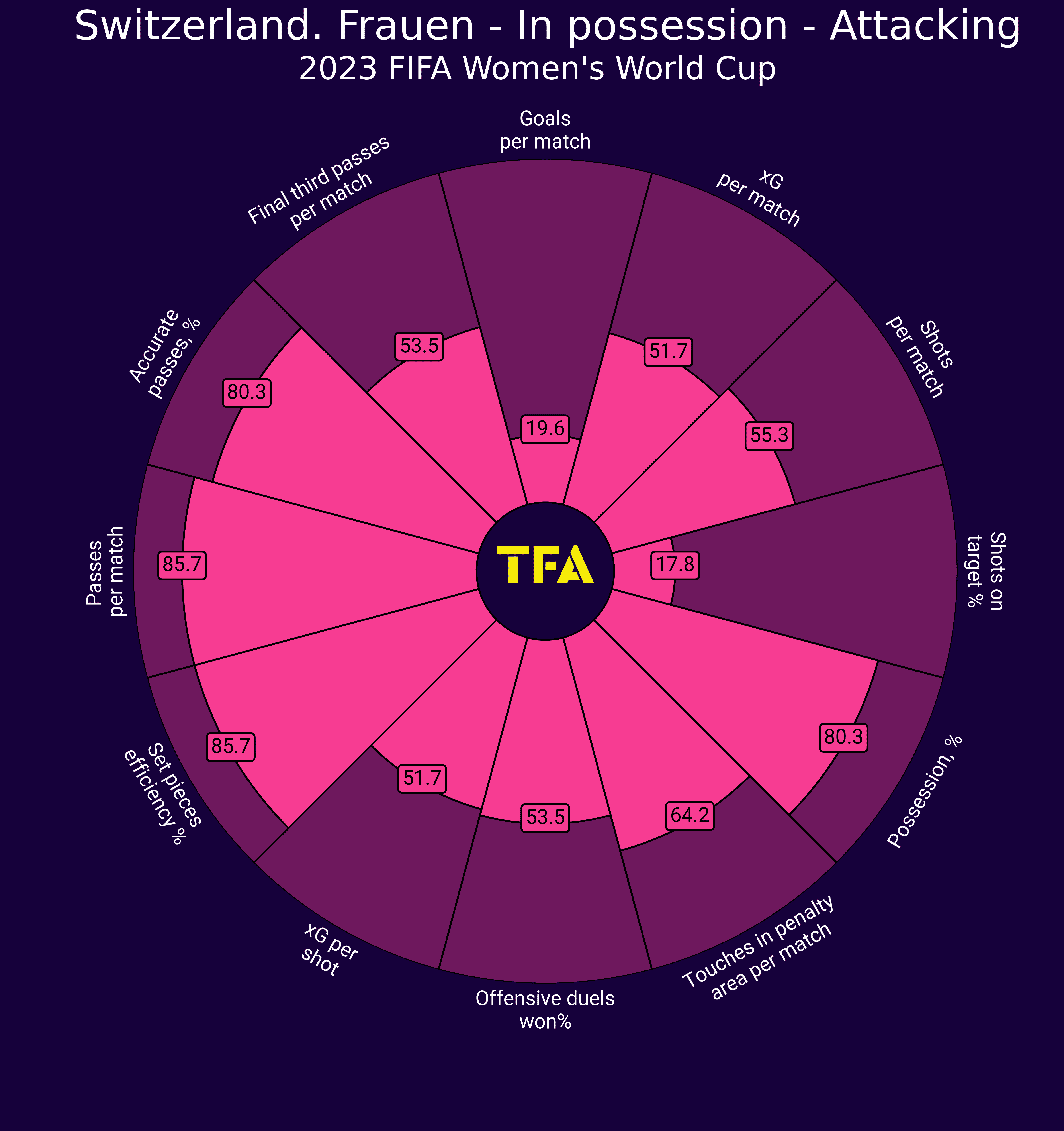
With the basics out of the way, it’s time to dive into the tactics, starting with the attacking phase. Firstly, the image above provides a statistical overview of the Swiss, and it is not exactly promising. They rank extremely high for possession, passes per match, and accurate passes per match. However, they are incredibly low for goals per 90. While their xG per match is slightly better, their shots per match and shots on target percentage are very low as well.
With this information, it is clear the Swiss tend to dominate possession but struggle to create high-quality opportunities. According to Wyscout, they average 58.81% possession under Grings. Dominating matches is not an issue for La Nati, but they desperately need to improve their chance creation. Nonetheless, let’s examine how this possession system works.
Switzerland prefer to construct attacks with control and organisation, indicating their tendency to dominate the ball. With the ball, they look to retain possession first and foremost; find the free man, keep the ball moving, and get organised. To get organised, they get in their 4-1-3-2 shape (or 4-4-2, 4-1-2-1-2, as you wish).
On the pitch, this shape can be illustrated in the image below. One of the midfielders is clearly deeper than the other, with both wide midfielders tucking inside. Most of the time, La Nati like to assert control, get organised, and patiently build possession. While this overwhelming tendency grants them control of the ball, it lacks a necessary verticality — perhaps an area to improve ahead of the tournament.
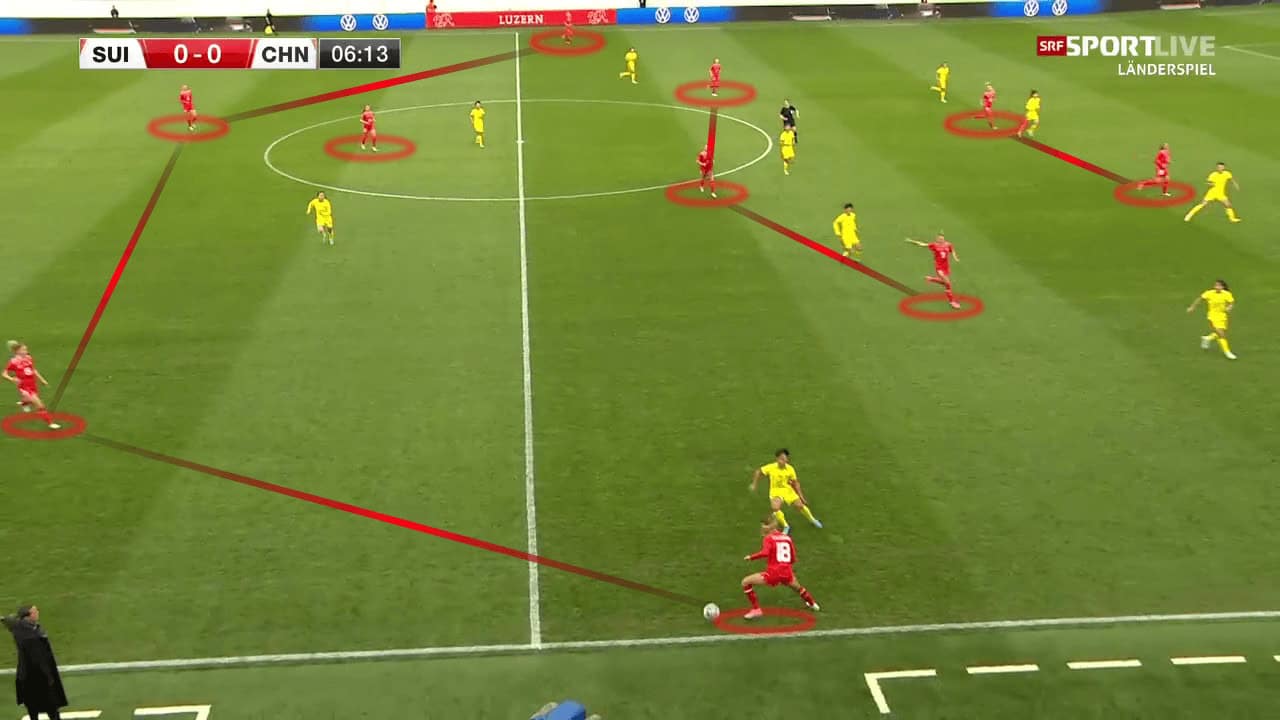
In the earlier phases of possession, they look to progress in a very structured manner. Their possession is predominantly focused on the wide areas, with the deep-lying midfielder initially providing an option from inside. The respective wide midfielder looks to provide a more vertical option ahead, and the advanced midfielder can support as she sees fit.
The structure is very systematic, especially in the first few phases of possession. Consequently, they rarely advance as a result of breaking the press, they are too predictable to do so. On the other hand, it does a great job of providing a balanced organisation and helping them circulate possession, slowly pushing the opposition back and gaining territory.
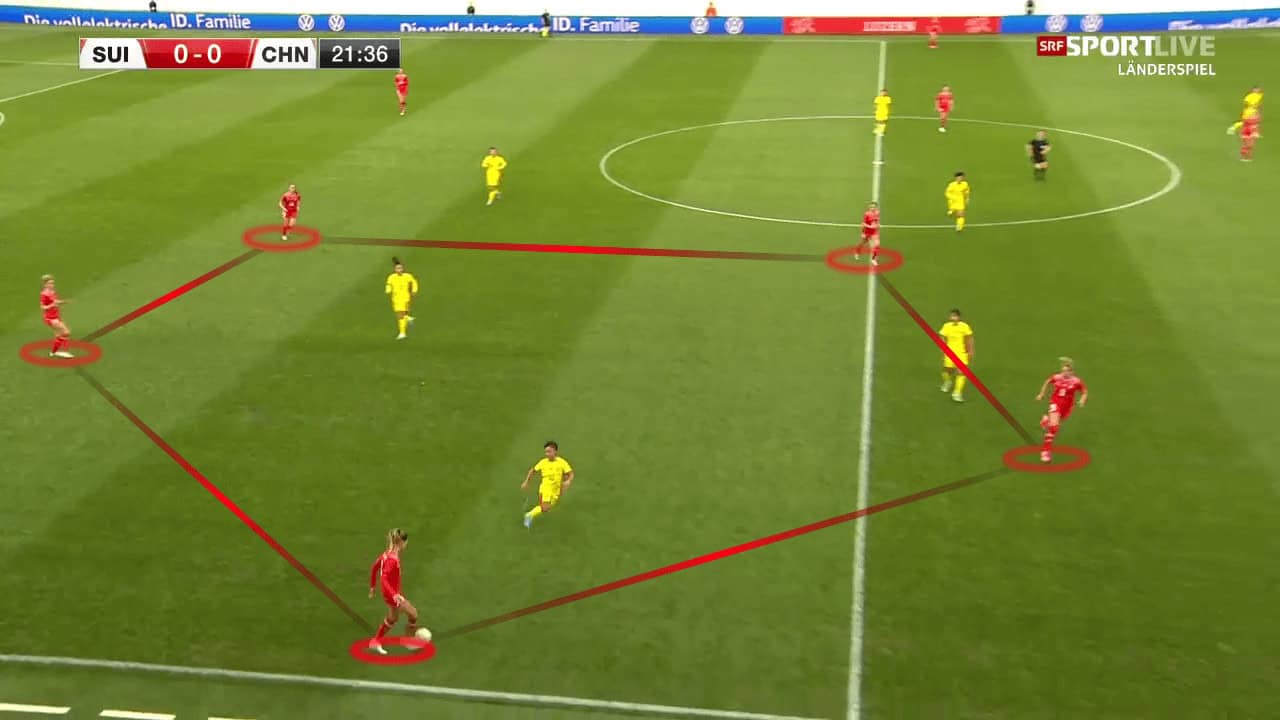
Switzerland’s progression is a slow one, and it has clear consequences. While Grings may look to adjust some of these areas, perhaps introduce a more dynamic approach, it has characterised them so far. We can confirm this by revisiting the data.
It obviously results in high possession and passing ranks, but also lower final third passes per match and touches in the penalty area per match. This leads to less volume and fewer opportunities. When they eventually get to creating shots, the opposition has organised a difficult low block, explaining the significant discrepancy between shots and shots on target.
As they pin the opposition in their half, the centre-backs tend to circulate the ball around the back, looking for options to progress. However, there is a lack of support from the midfield. The single-pivot alone is not enough to create, and the other three midfielders tend to stay high in fixed positions. With the lack of central support in this phase, they resort to wide areas.
Reaching the wide areas and getting closer to the final third, they look to offer dynamic runs from the inside players. These are obviously relative from scenario to scenario, but there are a few reoccurring patterns. For instance, the centre-forward can drop to support while a midfielder can make a vertical run, as highlighted below.
The idea is to disorganise the defensive organisation through both supporting runs towards the ball carrier and attacking runs into space. The development is heavily reliant on the creativity and problem-solving ability of the players, with the structure merely providing a starting platform.
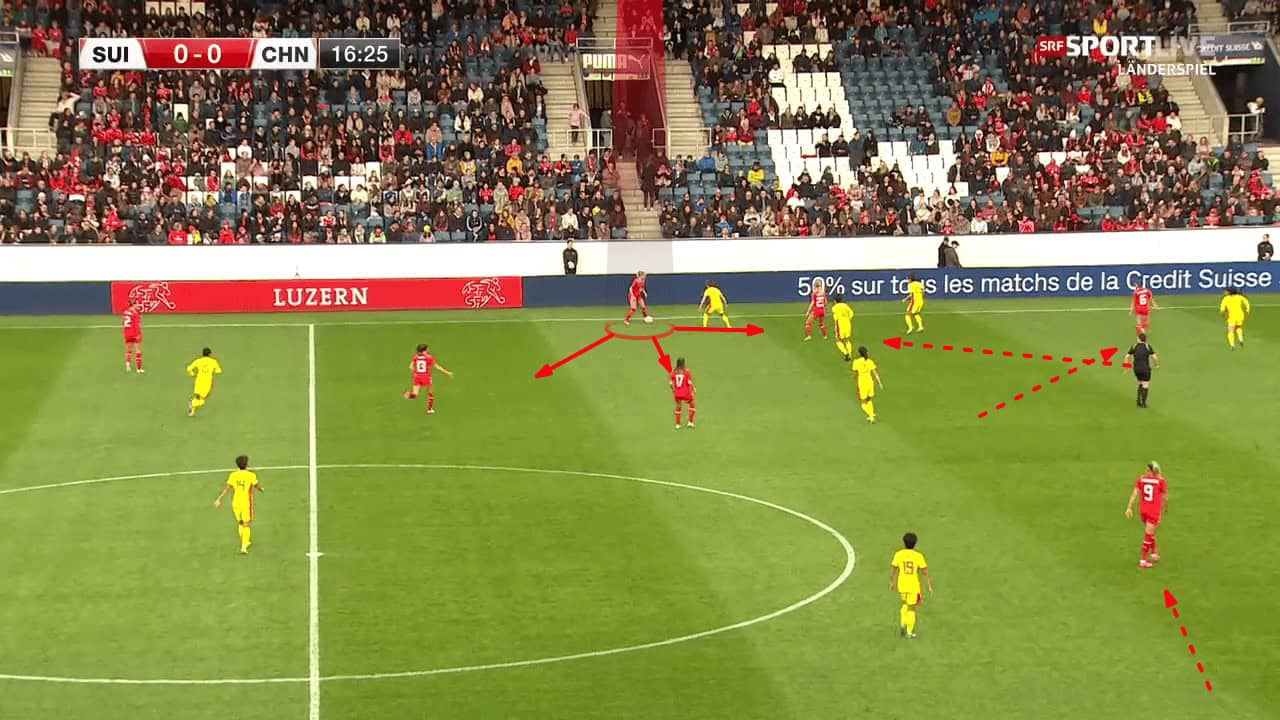
Under Inka Grings, Switzerland’s possession system has been easy to define. While there is a foundation to build on, with a clear organisation and ability to assert control, adjustments must be made, both in the structure and in the behaviour with the ball.
Defensive Phase
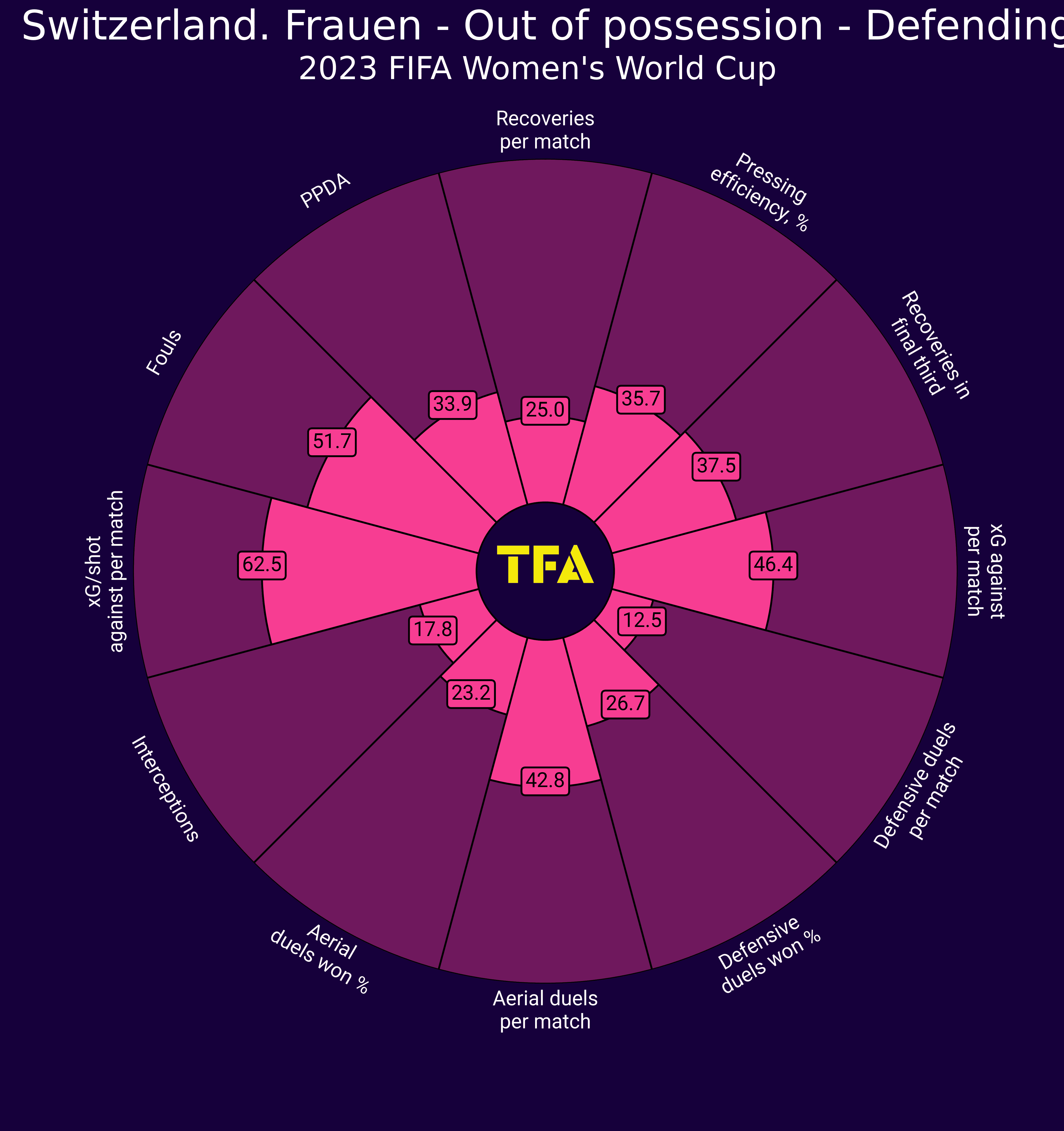
Naturally, with such a dominant performance in possession, their defensive metrics will be low across the board. However, two metrics stand out. They rank surprisingly low in recoveries in the final third and pressing efficiency. While their dominant nature would suggest a high and aggressive defensive system, that is hardly the case.
The first clear feature is the line of engagement. The Swiss maintain a more compact block, with the first line of pressure starting on the opposition’s midfield line rather than the backline. The advanced midfielder pushes up to split the centre-forwards, forming a line of three at the front. With this line of three, the centre-forwards have more freedom to go press the wide areas.
Behind them, the wide midfielders tuck in alongside the central midfielder to form a second line of three. Consequently, rather than pressing high and aggressively outright, they prefer to begin with a compact mid-to-high block.

While the advanced midfielder initially steps up alongside the centre-forwards, her positioning is more conservative, often marking the deepest midfielder rather than jumping to apply pressure. As a consequence, they are often able to have superiority in the midfield, with a 4v2 in the image below for instance. Depending on where the ball goes, they pass players on and maintain a zonal system. This allows them to instantly cover the wide areas while eliminating the options inside.
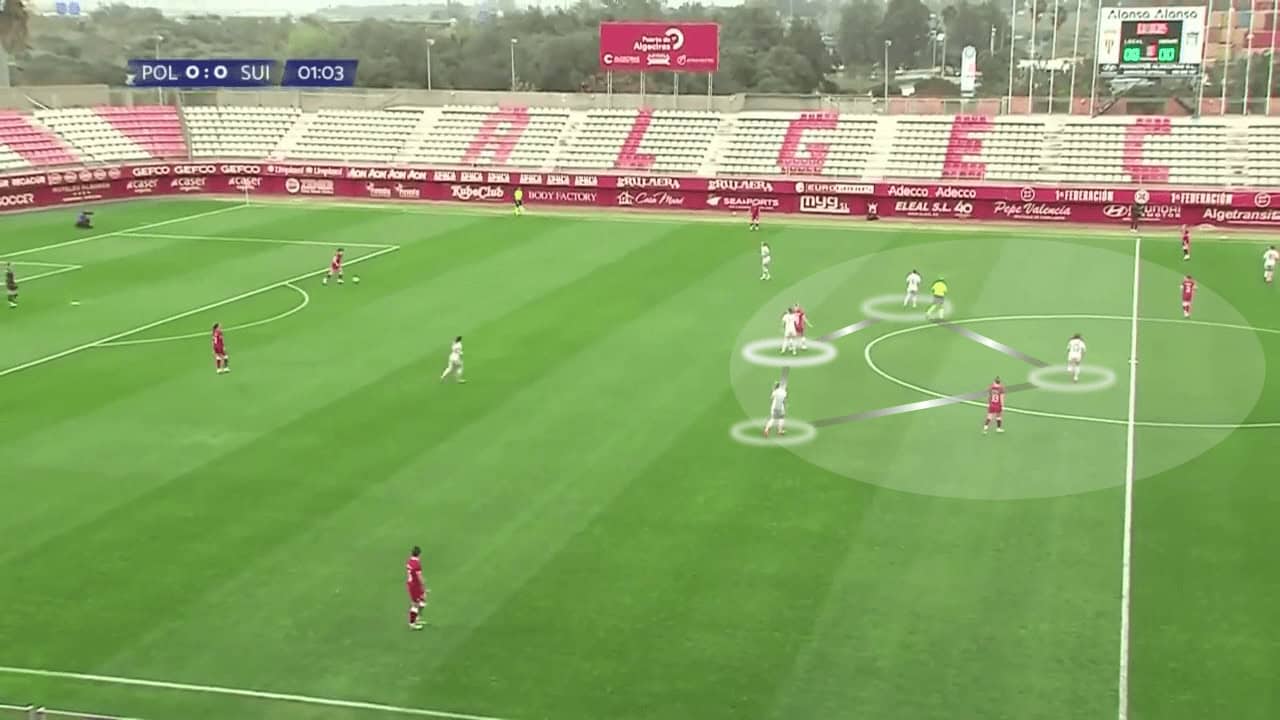
While they are able to defend the midfield well with numbers, they are also capable of defending the wide areas effectively. The wide midfielder is easily able to shift wide and with the full-back, keep the opponent from creating superiorities. Additionally, as highlighted below, the midfielders can provide cover and protect the central lanes.
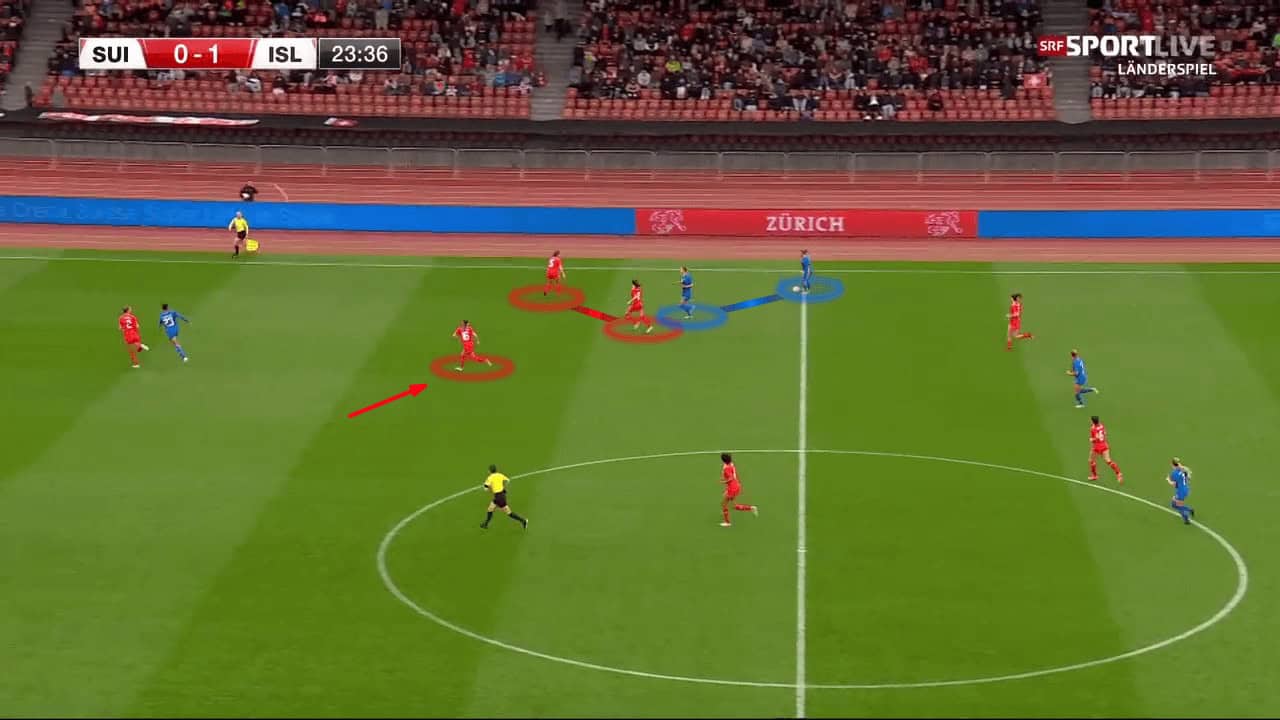
The Swiss have a more conservative defensive approach, with a very organised and dynamic block. Their PPDA under Grings is at 10.43, reinforcing this approach. Two of the three draws were 0-0 results, so their defensive system is hardly a problem. Additionally, given the exhausting nature of World Cup tournaments, their more passive approach could certainly prove beneficial.
Transitions
After examining their tactics in and out of possession, let’s examine their work in transition. It is obviously very much in harmony with their tactics in the other phases. Defensively, as examined, they are not one to press extremely high. As a consequence, a lot of their recoveries tend to be in deeper zones, limiting their ability to immediately counterattack.
Most of the time, after recovering the ball, the Swiss look to retain possession and establish their attacking organisation. For instance, below, they look to play backwards and away from pressure, slowing the tempo and reasserting control.
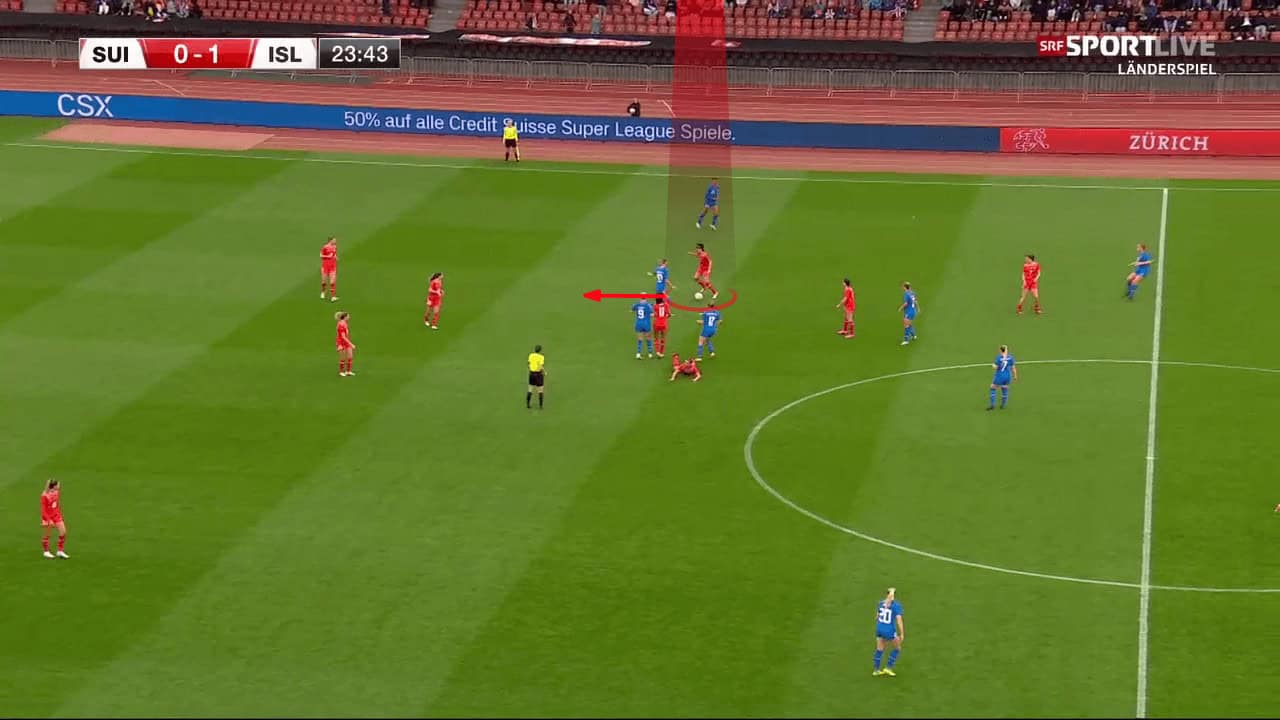
When the opportunity for a counterattack arises, they will look to exploit it. In the example below, La Nati recover the ball with space to attack. Additionally, the opposition are vulnerable with a lot of players ahead of the ball. In these instances, they will undoubtedly look to launch counterattacks. However, as a result of their defensive approach and their tendency to retain possession, it does not happen all that often.
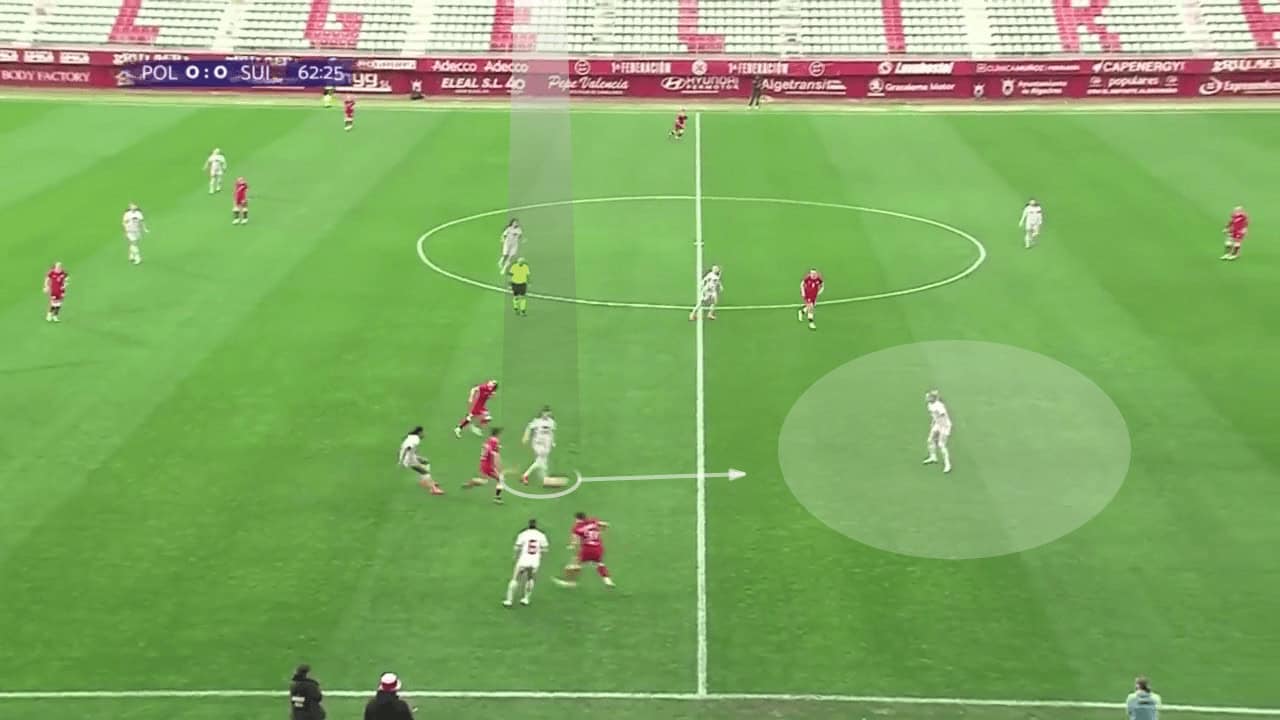
In defensive transitions, they naturally look to deploy a counter-press and keep the opposition in their half. Their ability to do this is largely a result of their rest defence, with players ready to step up and protect the central lanes, suffocating the opposition. Additionally, players in proximity to the ball will look to apply pressure and close immediate passing lanes after it is lost.
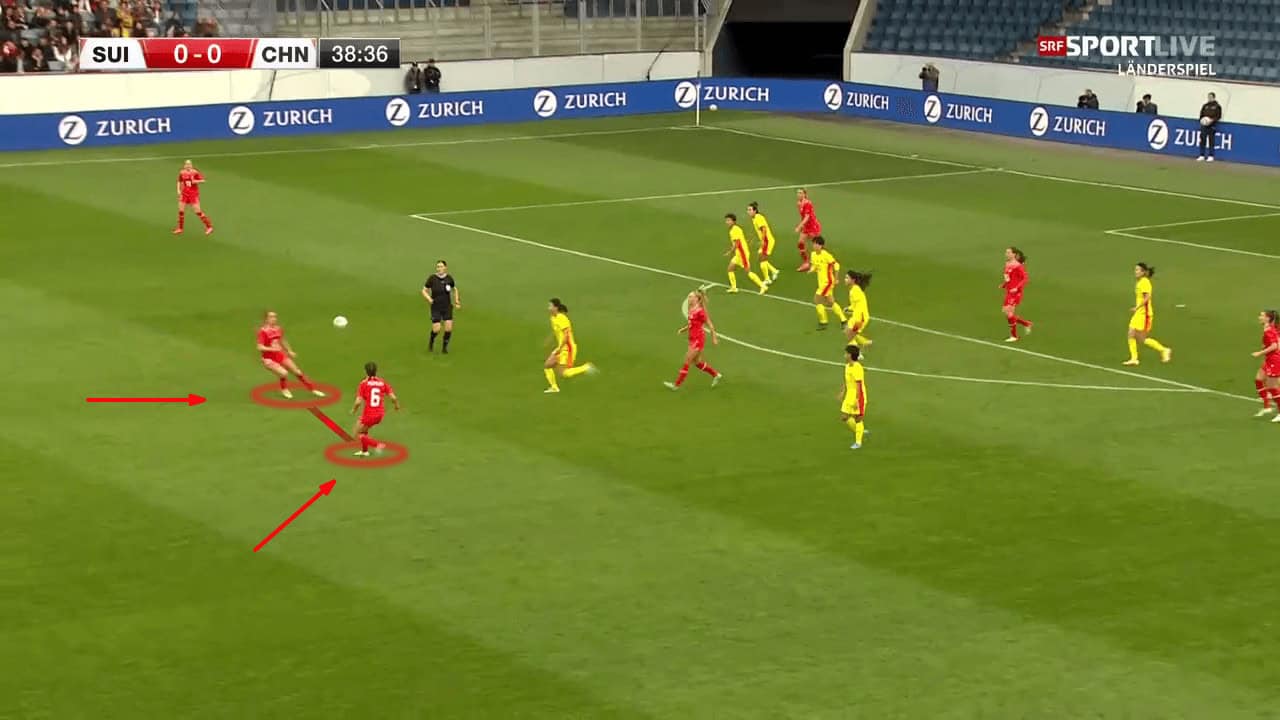
Defenders
Inka Grings’ squad is extremely balanced, and the defenders play a key role in this. The majority of the players are in the 22 to 28-year-old range, all in or entering their prime. Ella Touon is the exception, with the SGS Essen left-back still 19 years old. Additionally, they are extremely versatile. Paris FC’s Aigbogun and Arsenal’s Maritz, for instance, are capable of playing both right-back and left-back. Calligaris, another important player, can play both as a right-back and as a centre-back.
Midfielders
The midfield has experience in the key players, but it is made up of a younger core. Nonetheless, Grings has plenty of versatile options for her midfield diamond. Reuteler is one of the most consistent pieces in Grings’ puzzle, and her performance will be key to the Swiss midfield. Additionally, Barcelona’s Crnogorčević and Arsenal’s Walti bring experience at the highest level.
Attackers
Up top, Humm and Bachmann are among the oldest players in the squad. The partnership brings valuable experience, and they will be expected to come up big for La Nati. Aston Villa’s star, Alisha Lehmann, will also be expected to play an important role. On the other hand, Svenja Fölmli and Aurélie Csillag, both 20 years old, provide younger options to complement the squad.
Key Player
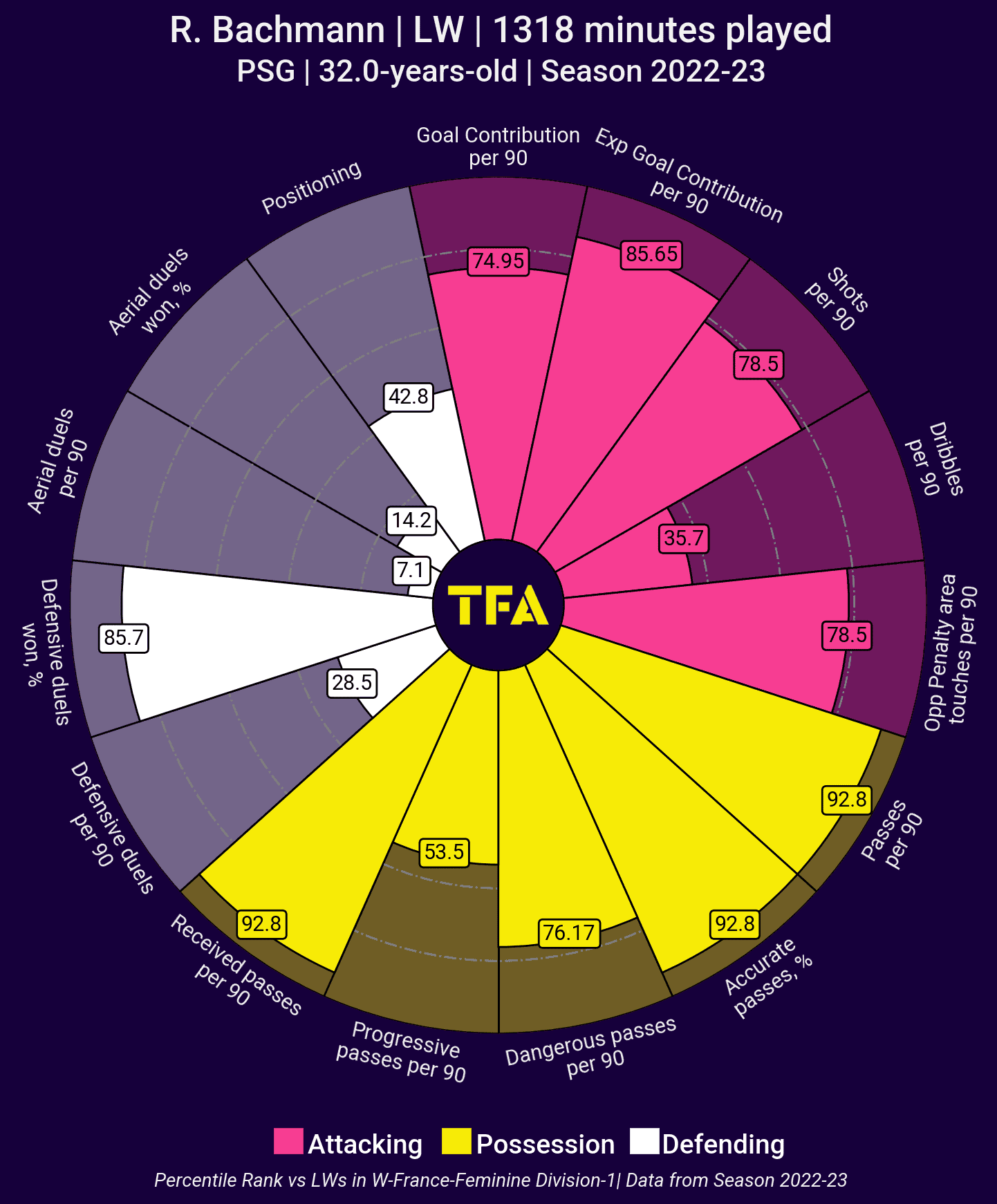
PSG’s Ramona Bachmann should be Grings’ most important player in the tournament, with the veteran star proving to be one of the most consistent players in the national team. Her contribution in the final third is undeniable, highlighted by the attacking section in the image above. In addition, the centre-forward also plays an important role in possession, getting involved and creating chances for her teammates. If the Swiss are to perform well in the tournament, Bachmann will have to play a key role.
Tournament Prediction
Despite an exciting performance in the World Cup Qualifiers, Nielsen’s departure left Switzerland in a tough situation ahead of the tournament. Grings has come in and quickly introduced order to the side, but the results have yet to come. There are clear areas to adjust ahead of their opening match, but the German manager has done well to introduce solid foundations in her first four matches. In their second-ever appearance, and given the circumstances, qualifying for the knockout rounds would be a great achievement for La Nati.

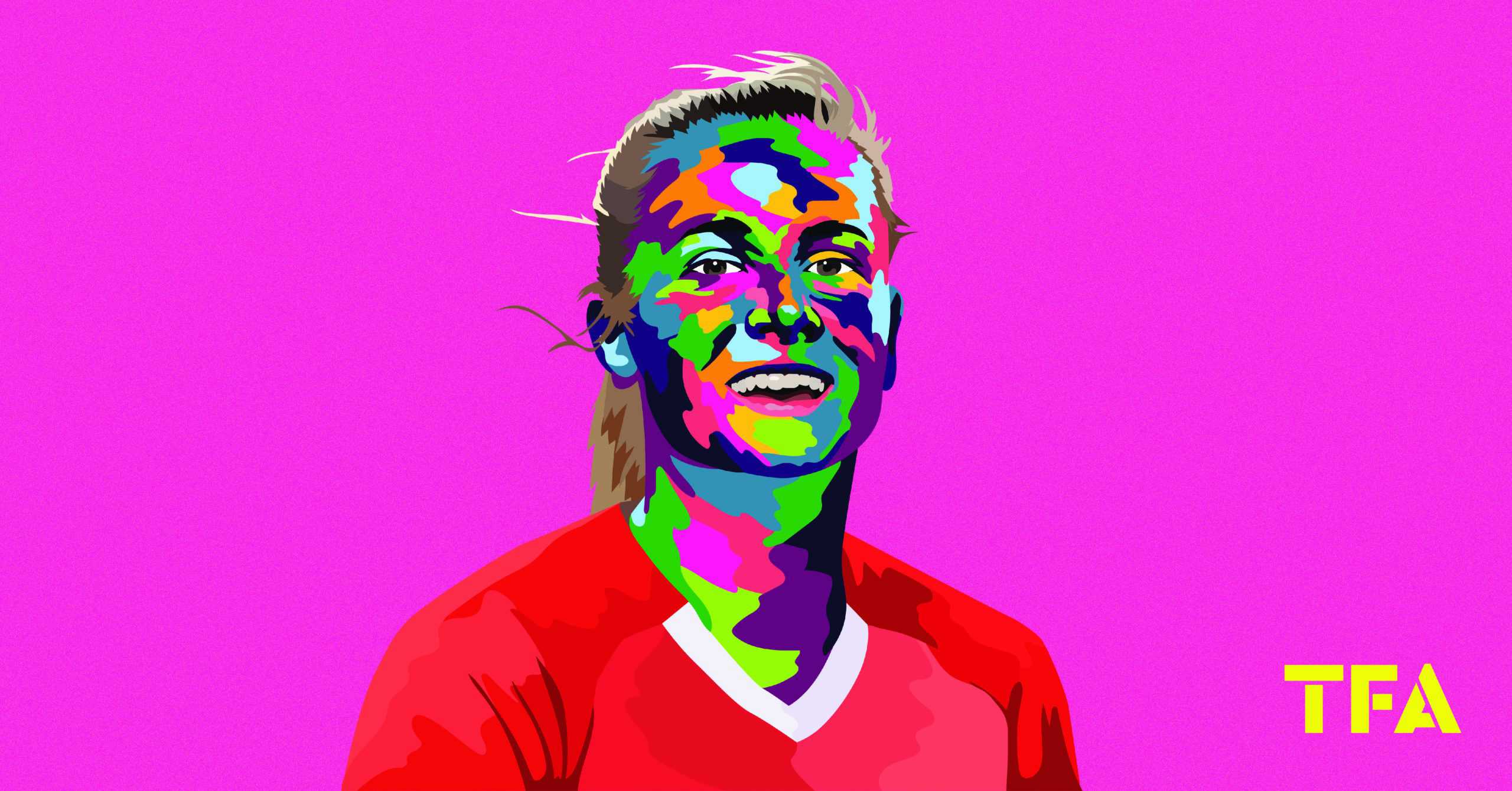



Comments